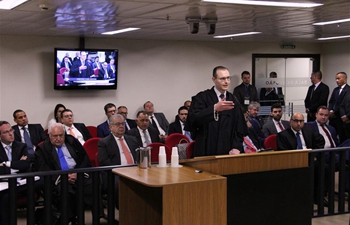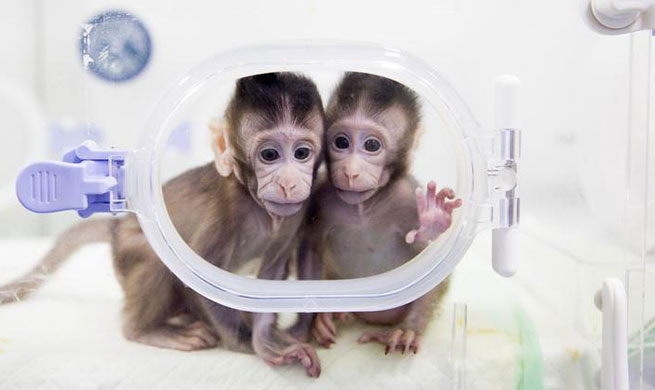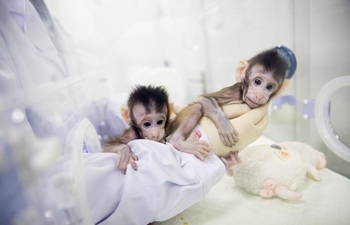CHICAGO, Jan. 24 (Xinhua) -- U.S. researchers have identified that mutations in a gene called HEATR2 are the molecular roots for primary ciliary dyskinesia, a genetic lung disease.
Amjad Horani, an assistant professor of pediatrics at Washington University and the study's first author, treats about 30 children with primary ciliary dyskinesia at St. Louis Children's Hospital.
Some of his patients have mutations in a gene called HEATR2. While growing healthy airway cells in the laboratory, Horani noticed something odd about the HEATR2 protein: It showed up very early, and it was located in the middle of the cell, not in the cilia. Two other proteins associated with the disease exhibited the same pattern.
Horani and his colleagues further found that the three proteins form a scaffold on which the molecular motor later is to be built.
Horani swabbed the noses of some of his patients and grew ciliated cells from them. He found that the scaffold is constructed incorrectly in cells with mutations in any of the three early genes. The proteins that comprise the motor arrive at the faulty scaffolding, rather than passing through an efficient assembly line and forming a motor, they collect haphazardly into a heap.
"Piling together misfolded proteins turns out to be the way that the body tries to get rid of abnormal proteins," Horani said. "Now that we know what is wrong. We're starting to study whether we can prevent the protein heaps from forming and somehow rescue the parts of the motors. If we can get just a few of these proteins to assemble, we may be able to improve quality of life for people with this disease."
"What's unique is that these failed motors actually have all their parts, and they are fully formed and normal," said senior author Steven Brody, a professor of radiology at Washington University. "It's like a machine that's missing just one screw: Everything just falls apart. If we can find a way to hold the motor together, we may be able to treat the disease. This opens a whole new opportunity to screen for medications."
Primary ciliary dyskinesia affects about one in 15,000 people. Mutations in more than 40 genes have been linked to the disease. Along with recurring respiratory infections, the disease also can cause infertility. There is no curative treatment for the disease.
The findings have been published in Proceedings of the National Academy of Sciences.

















